I make paintings because (1) I have the basic skills to do such work, and (2) there are still things that I want to see that I have not yet seen. Much of my work is self-explanatory, insofar as it can be explained at all. I leave it to you to work out and discover, always with this in mind—the words we say and think about art are not the art. Art is in the looking, not the saying.
A little orientation may, however, be helpful when looking at my abstract works.
These paintings are on traditional rectangular canvases, tipped at an angle—“hung crooked,” if you like. Within that format, I develop an arrangement of non-objective shapes, lines and colors that leads the eye to see and believe that the painting should naturally and properly hang that way. That’s it. But that concept leads to countless variations and solutions, and has kept me occupied for forty-plus years.
The concept also lends itself to metaphor. The cockeyed canvas speaks to our common human experience of finding ourselves in an unasked-for and ever puzzling life. Caught in this inexorable condition, we try to assemble some sort of structure that might make it all seem somehow “meaningful” (whatever that is). This is one possible story, a filter through which to look at the paintings, made up after the fact of painting. But the story is not the art, and the art comes first.
Titles for these non-objective pieces were initially a problem. Numbers and dates, as true as they may be, are bland and unimaginative. Providing names of places or events burdens the art with information that is misleading. Titles based on abstract notions (“Monday Anguish,” “The Dance”) are too . . . abstract, contrived, pretentious, “artsy.” What seem to work best are “personal” names (William and Dorothy and Olga and Boris), because such names give us a handle without adding meaning. Personal names function with the paintings the way they do with humans – we really don’t know who Bill is going to be until we’ve been around him for a while.
F. David Ramey
